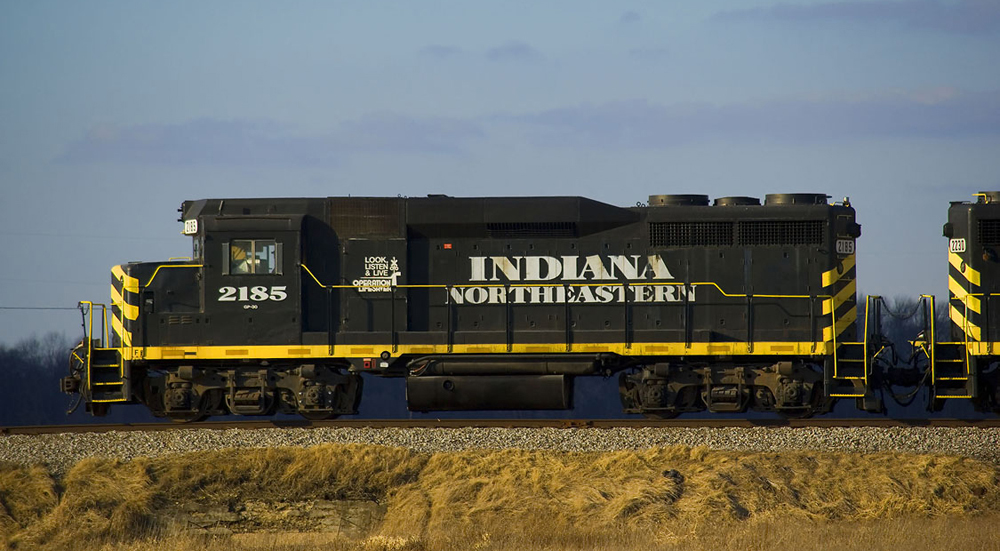The Indiana Northeastern’s effort to upgrade a 1960s-era diesel locomotive was recently featured in Trains Magazine:
Tractive-effort upgrade, other improvements to EMD product
HUDSON, Ind. — Mechanical staff of the Indiana Northeaster Railroad is in the process of completing upgrades and repainting of ex-Reading Lines locomotive No. 2185, one of the two GP30s on the 105-mile system which operates in Indiana, Michigan, and Ohio.
Travis Bloom, chief mechanical officer for the railroad, leads a staff of four mechanical employees at the railroad’s state-of-the-art locomotive shop in Hudson. The locomotive has received new power assemblies and an electrical upgrade, Bloom says, including the installation of a BOA (Bolt-on Adhesion) tractive effort system from ZTR Control Systems, which designs upgrades for older locomotives. This addresses a common complaint about the storied GP30s, that they are prone to slipping while starting a heavy train.
“The system takes the wheel-slip control and load regulator that was factory-installed by EMD and removes that,” Bloom says. “It is all microprocessor controlled now. Instead of using current sensors, it uses other methods to determine wheel slips and how much it can load before it slips. It helped it a lot; they were very slippery. I would compare it to a good-pulling GP9 now, but with a little more horsepower.”
Says engineer Jeff James, “As slippery as the old GP30s are, this new hardware is a great improvement. It has made a noticeable difference on dry rail.”
The locomotive awaits lettering and numbers as part of the repainting process. The railroad has repainted six units at its two-stall shop in the eastern Indiana town, which replaced a one-stall engine shed in Hillsdale, Mich.
“When we repaint a locomotive, we strip the cab, replace the flooring, repaint the cab, put everything back together then go over the engine compartment.,” Bloom said. “We are just finishing the (car body) striping.’’
EMD’s GP30, introduced in 1961, is the only locomotive that features styling from GM automotive designers, the source of its unique “skyline casing” along the cab and carbody.

